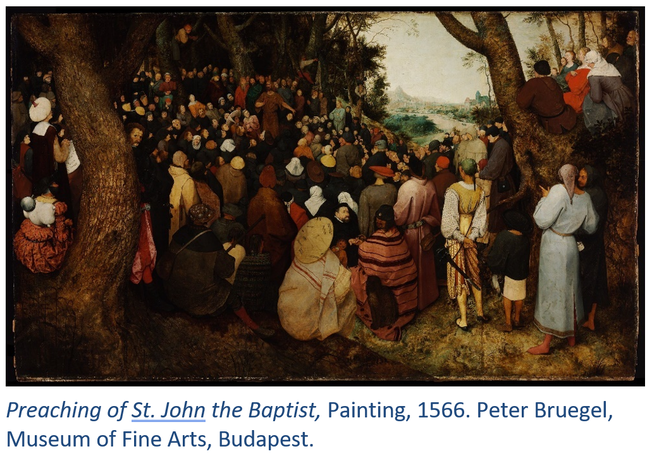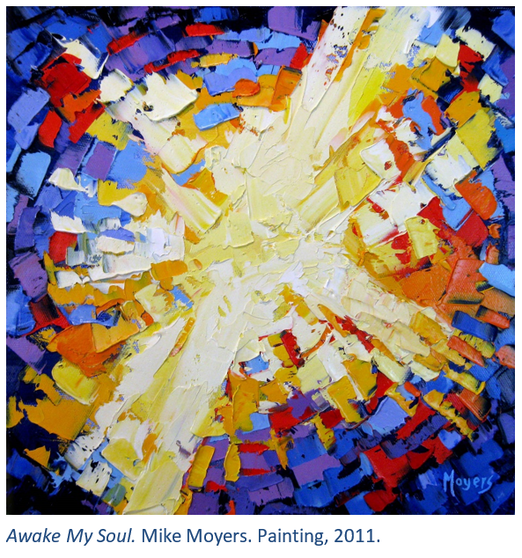 "Don’t call me a saint." ~Dorothy Day [God] has told you, O mortal, what is good; and what does the Lord require of you but to do justice, and to love kindness, and to walk humbly with your God?. ~Micah 6:8 Do justice. Love kindness. Walk humbly. These are the simple, straightforward behaviors at the heart of true religion according to Micah. Jesus’ words to the crowds in Matthew 5:1-12—the Beatitudes, or “blessings”—expand on Micah’s shorthand while also echoing the Torah, the commandments of Moses. Interestingly, Jesus does not speak these as commands, but as statements of fact, as a preexisting and confoundingly counter-intuitive reality. Blessed are the poor? The mourners? The hungry? Thomas Merton thought a better translation for meek was nonviolent. Blessed are the nonviolent? Here, perhaps we can begin to make some cognitive leap toward what Jesus seems to be naming in Matthew—an upside-downness of this Way of Christ that turns us right-side up. Enter into worship.[i] Readings: Micah 6:1-8 † Psalm 15 † 1 Corinthians 1:18-31 † Matthew 5:1-12 About the Art: Kelly Latimore started painting icons in 2011 while a member of the Common Friars from 2009-2013. On her website, she writes, “Our collective work was about being more connected: to ourselves, each other, our surrounding community and the land. This manifested itself as a place called ‘The Good Earth Farm’ where we held weekly services and meals, and grew produce for our community and local food pantries. Iconography has since become a practice of more considerations: of color and light, of brush stroke and form, symbol and meaning...However, I do not wish to approach Iconography as an art form that simply follows an inherited tradition, knowledge and practice. I want it to be a creative process, meditation, and practice that brings about new self knowledge for the viewer and myself. Who are the saints that are among us here and now? I was not taught by a traditional Iconographer, and so to some, I am breaking many rules. There are icons here that people may find theologically unsound and wrong, or for others, helpful and inspiring. I think both reactions are important. My hope is that these icons do what all art can potentially do, which is, to create more dialogue. The other may have something to teach us about what we know, about who God is, the world we live in and who are our neighbors. This is the real work of being human and of art. Being more present. [i] Latimore, Kelly. Dorothy Day with Homeless Christ, from Art in the Christian Tradition, a project of the Vanderbilt Divinity Library, Nashville, TN. https://diglib.library.vanderbilt.edu/act-imagelink.pl?RC=57122 [retrieved January 19, 2023]. Original source: Kelly Latimore Icons, https://kellylatimoreicons.com/.
We continue to keep our financial commitments to our mission partners and staff. If you are not yet able to join us, thank you for remembering to send in your financial pledges and offerings or donating here.
0 Comments
 "Come, follow me,” Jesus said, “and I will send you out to fish for people.” At once they left their nets and followed him. ~Matthew 4:19-20 What does it mean to fish for people? Many of us were told by church voices it was a sort of collection, a saving of souls of one kind or another, like gathering so many fish in a net. Ironically this wouldn’t be good news for the fish! These notions grew out of a particular identity, out of a sense that we who were doing the fishing had already achieved something—some understanding or status or privileged relationship with the holy that situated us on the inside of a circle we were looking to draw wider. Is there another way to understand this that takes into account what we have learned about our own stories and others’, that resist our predilections toward division and the ego’s need for self-justification that drives it? “I belong to Apollos, ” “I belong to Cephas…” said our ancient Corinthian siblings in their embittered community. Paul rejoins, “Has Christ been divided?” (1 Corinthians 1:12-13). The practice of the early church seemed to have much to do with making a space in the present for those who were not finding one. Mothers and brothers—siblings with which to travel life joyfully and with everything that was needed, an astonishingly rich tapestry of the human family. It was the presence of a new economy, if you will, and a way of thinking about whatever we do—fishing or otherwise—as a vocation, as a way to use what we have been given—talents and tongues, bread, education, medical care, time, even suffering—to bless and be blessed. Enter into worship.[i] Readings: Isaiah 9:1-4 † Psalm 27:1-4-9 † 1 Corinthians 1:10-18 † Matthew 4:12-23 About the Art: Peter Koenig is a Catholic artist located in the United Kingdom. Of his work, he says, “The goal of my life is to make a richer Christian-Catholic art. I want to paint the drama, romance and poetry of the sacred book.” This painting on the ceiling of St. Bede’s church in Newport Pagnell, UK, was inspired by a number of passages, including: Psalm 144 Reach down your hand from on high; deliver me and rescue me from the mighty waters Psalm 18 He reached down from on high and took hold of me; he drew me out of deep waters. Matthew 4 “Come, follow me,” Jesus said, “and I will send you out to fish for people.” At once they left their nets and followed him. [i] Koenig, Peter. Ceiling Painting for St Bede's, from Art in the Christian Tradition, a project of the Vanderbilt Divinity Library, Nashville, TN. https://diglib.library.vanderbilt.edu/act-imagelink.pl?RC=58545 [retrieved January 15, 2023]. Original source: Peter Winfried (Canisius) Koenig, https://www.pwkoenig.co.uk/.
We continue to keep our financial commitments to our mission partners and staff. If you are not yet able to join us, thank you for remembering to send in your financial pledges and offerings or donating here.
 The next day he saw Jesus coming toward him and declared, “Here is the Lamb of God who takes away the sin of the world! ~John 1:29 The lectionary moves from Matthew to John this week, pulling back, in a way, from the immediacy of the story of wonder and flight that has dominated the Christmas season, to consider the meaning of this coming one. We also find we have been transported 30 years. The child the seeking magi found under the star, who was forced into exile by murderous Herod and a fearful Jerusalem is now introduced by his cousin John…as a sacrificial lamb: the lamb of God who takes away the sin of the world. The 16th century artist Pieter Bruegel imagines the scene within the chaos of his own Flemish time and place. Peasants and nobles, soldiers and clerics, children, pilgrims and foreigners are so tightly assembled it is hard to even make out John and the Jesus. We wonder if we can hear, much less understand from our perch near the back of the crowd. A careful look will reveal judgments of all sorts by the artist as to who listens and perceives and who doesn’t. This too is not much different than our own times. “Listen to me, O coastlands, pay attention, you peoples from far away!” the prophet voices his dream in Isaiah, the cry laboring above the noise and confusion. The lamb of God who takes away the sin of the world. Let us quiet ourselves and listen for the one who comes quietly, unassumingly, to startle us awake with love. Enter into worship. Readings: Isaiah 49:1-7 † Psalm 40:1-11 † 1 Corinthians 1:1-9 † John 1:29-42 About the Art: Bruegel, Pieter, 1564-1638. Preaching of Saint John the Baptist, from Art in the Christian Tradition, a project of the Vanderbilt Divinity Library, Nashville, TN. https://diglib.library.vanderbilt.edu/act-imagelink.pl?RC=58375 [retrieved January 9, 2023]. Original source: https://commons.wikimedia.org/wiki/File:Pieter_Bruegel_the_ Elder_-_The_Sermon_of_Saint_John_the_Baptist_-_Google_Art_Project.jpg.
We continue to keep our financial commitments to our mission partners and staff. If you are not yet able to join us, thank you for remembering to send in your financial pledges and offerings or donating here.
 And having been warned in a dream not to return to Herod, they left for their own country by another road. ~Matthew 2:12 Yet again in Matthew a dream alters the future. This one comes to the magi (did they all three share it?). Do not trust Herod and his hungers. Go home by another way. Another route home, of course, is also no new thing. Whenever we meet truth we are changed by it; souls awakened, lives transformed, we are set on a corrected path, the way forever altered. Enter into worship.[i] Readings: Isaiah 60:1-6 † Psalm 72:1-7, 10-14 † Ephesians 3:1-12 † Matthew 2:1-12 About the Art: “An abstract depicting the light of The World shattering the darkness.” From the author: I firmly believe that art is a communion with the soul. Through my art, I strive to make known the beauty and wonder of life and faith. The pieces in this exhibit are inspired by things that have touched my life in a meaningful way. They range from plein air and impressionism to abstract and conceptual. My hope is to successfully communicate those inspirations so that you might be touched as well. [i] Moyers, Mike. Awake My Soul, from Art in the Christian Tradition, a project of the Vanderbilt Divinity Library, Nashville, TN. https://diglib.library.vanderbilt.edu/act-imagelink.pl?RC=57138 [retrieved December 26, 2022]. Original source: Mike Moyers, https://www.mikemoyersfineart.com/.
We continue to keep our financial commitments to our mission partners and staff. If you are not yet able to join us, thank you for remembering to send in your financial pledges and offerings or donating here.
 Since, therefore, the children share flesh and blood, [Christ] himself likewise shared the same things, so that through death he might destroy the one who has the power of death… ~Hebrews 2:14 Joseph the dreamer—not Jacob’s son, the one with the fabulous coat, but his namesake, the husband of Mary—is dreaming again. Three times on the heals of the Magi visit, in this short Matthew passage he dreams, and then acts, to save the child and his family from powerful forces protecting their narrow interests. He is attune not only to the message of the angels, but to the political realities on the ground and their intersection in time. The holy migrant family make a journey that mirrors that of Jacob’s son, finding refuge in Egypt. Like so many families in our own time, they cross borders and rivers seeking safety from leaders who fume and plot and terrorize. There is a strange comfort in knowing that these ancient scriptures looking to such different times than our own know something about the human condition that spans all time…and our time. “It was fitting,” says the writer in Hebrews, “that God…should make the pioneer of [our] salvation perfect through sufferings.” Suffering was not the end of Joseph’s imagination but the beginning. He dreams engendered new possibilities. He dreamed and acted, finding a way through the wilderness for the savior of the world to find us. What is God dreaming up for you? What do these times offer to us of new possibility and new life? Enter into worship. About the art: “Flight into Egypt” John August Swanson, Serigraph, 2002. Swanson notes: The lonely flight of the Holy Family is depicted visually by the exact layering of transparent colors and drawings, creating a myriad of fine details and rich colors. Swanson, John August. Flight into Egypt, from Art in the Christian Tradition, a project of the Vanderbilt Divinity Library, Nashville, TN. https://diglib.library.vanderbilt.edu/act-imagelink.pl?RC=56547 [retrieved December 19, 2022]. Original source: Estate of John August Swanson, https://www.johnaugustswanson.com/.
We continue to keep our financial commitments to our mission partners and staff. If you are not yet able to join us, thank you for remembering to send in your financial pledges and offerings or donating here.
|
worshipYou'll find here links to weekly worship and, where applicable archived service videos. Archives
July 2024
Categories |
 RSS Feed
RSS Feed